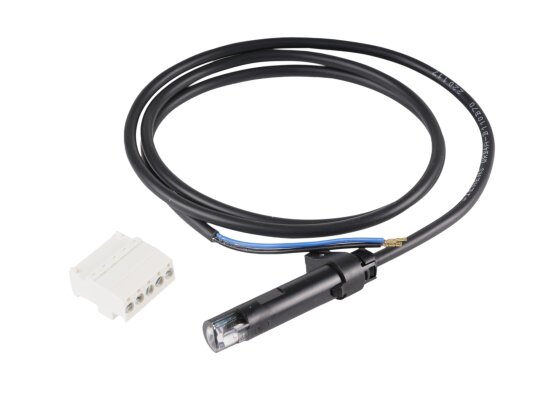Yellow Flame Detector Weishaupt QRB4A-B110B70
Alternative Part Number
Weishaupt
We21110412582
About product
Go to descriptionAED 625
Description
Flame sensor Weishaupt QRB4A-B110B70, art.: 21110412582 – compact device for monitoring yellow flame in the visible light spectrum. It is used to equip Weishaupt industrial liquid fuel burners. Compatible with automatic burners operating in intermittent mode. Lateral and direct measurements expand the possibilities of installation and detection. The sensor requires standard measures of protection against light interference.
Features and specifications:
Yellow flame monitoring during combustion of liquid fuel;
Sensitive element – photoresistor;
Measurements with illumination from the side (at a right angle) and directly;
Normal sensitivity level;
Electrical protection of built-in components from dust/moisture – IP 54 class;
Housing length – 68 mm;
Free end of cable, stripping;
Compatible with automatic burners with an intermittent cycle;
Any mounting position;
low maintenance;
easy installation and connection;
complete with X10-05 plug for WM-L W-FM50.
More about the flame sensor
The sensor is suitable for use with LMO/ LMV2/ LMV3 furnace controllers, and on request with LME7/LME8. It is assembled in a small housing, inside which there is a light-sensitive element. The photodiode has lateral and frontal visibility. The operating principle is based on the analysis of infrared radiation and the supply of electrical signals to the combustion manager for flow control.
A two-wire cable 1100 mm long with thermoplastic PVC insulation is rigidly connected to the housing. The plug connection ensures quick and reliable connection of the flame sensor to the burner automation.
Operating temperatures
The flame sensor is designed for ambient temperatures of -20...+60 ºC and relative humidity < 95%. Condensation, ice, and water ingress on the housing are prohibited.
Protection from light interference
Flame sensors for Siemens QRB1 burners detect extraneous radiation. When choosing a location, it is necessary to exclude light from other sources to avoid incorrect operation of the device. The detector is placed taking into account the minimization of light interference and signal transmission losses. All actions on installing the sensor should be performed only by a specialized specialist.
Characteristics


